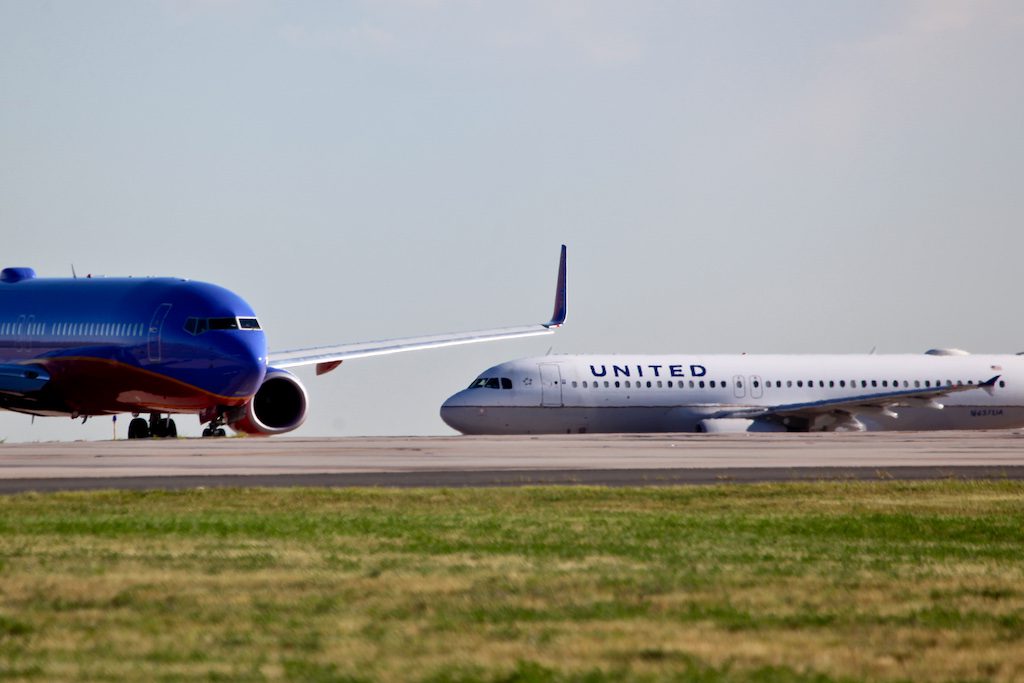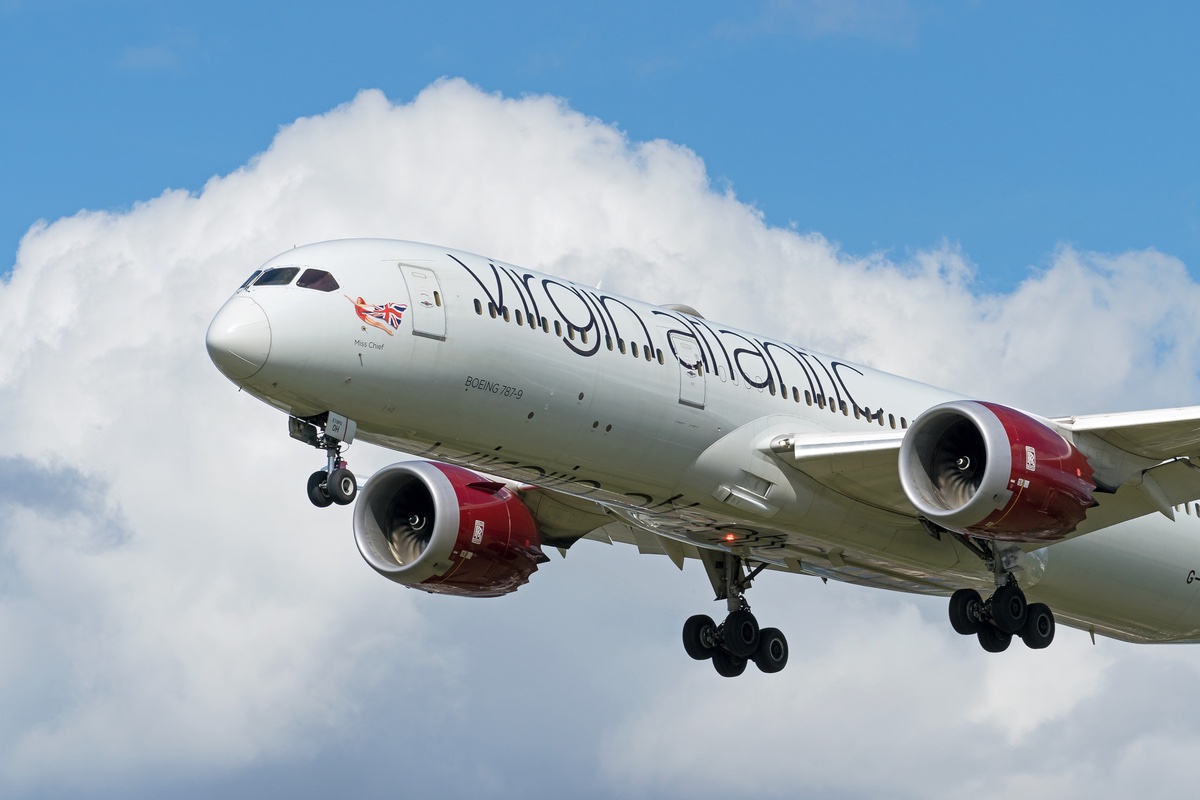United CEO Says U.S. Airline Industry Unprepared for Post-Pandemic Realities

Skift Take
United Airlines CEO Scott Kirby came out swinging with a stinging critique of the U.S. aviation system on Wednesday. Despite what he views as profound structural changes during the past four years, other players are in "denial" and failing to accept these changes — to the detriment of travelers and the entire industry.
The changes in question are fundamental to running an airline. Staffing tops the list as the U.S. pilot shortage, or captain shortage, continues to plague regional airlines, and everything from maintenance technicians to air traffic controllers remain in short supply. Technology is inadequate and not up to the challenge of the regular disruptions, like weather, that impact the industry. Delays building and delivering new planes at Airbus and Boeing are limits on growth. And, in a nod to investors, costs are permanently higher than they were in 2019.
"You can’t run your airline like it’s 2019 or you will fail," Kirby said during United's fourth-quarter earnings call. The Chicago-based carrier estimates that it needs 10 percent more pilots and 5 percent more planes than it had in 2019 to operate the same schedule, he added.
The U.S. airline industry has been rocked by two large technology-related snafus in recent weeks. The first was the meltdown of Southwest Airlines between Christmas and New Years that resulted in more than 16,700 flight cancellations, and cost the carrier an initial $825 million and an untold amount of customer good will. The second was the outage of a key flight safety communications system due to a corrupted file that prompted the Federal Aviation Administration (FAA) to halt all flight departures nationwide for nearly two hours earlier in January.
Kirby did not name Southwest in his comments but repeatedly referred to "competitors" that were in "denial" over the structural changes to the industry. He did reference the FAA, and its air traffic control organization, saying they needed additional investment in both technology and staff.
Delta Air Lines CEO Ed Bastian also called for additional FAA funding following the nationwide ground stop.
The net result of Kirby's critical outlook for the U.S. industry is that airline capacity will be hamstrung for an extended period of time. Rosy capacity forecasts by individual carriers will prove overly optimistic — as they were in 2022 — this year and in the future; and even when capacity has recovered to pre-pandemic levels, growth will be slower than before. That will mean higher airfares for travelers, especially as more corporate traffic returns and U.S. travel demand exceeds 2019 levels, which it is expected to this year.
"We're near the limit on capacity — on flights in the system," he said.
Will United Benefit?
United, of course, is well positioned to take advantage of this dire situation in Kirby's estimation. The airline's orders for hundreds of new Airbus and Boeing aircraft during the pandemic sets it up well to grow by adding seats rather than flights; in other words, replacing smaller planes with larger ones. And its investments in technology prior to and during the crisis has set it up well to manage through a struggling aviation system.
The buffers the carrier has put in place during the past year — that 10 percent more staff and 5 percent more planes than before the pandemic, plus technology upgrades — are serving it well during periods of irregular operations. "Buffers are much less expensive than the cost of the otherwise inevitable operational meltdowns," Kirby said.
United did avoid any of the major disruptions that befell many of its competitors last year. In addition to Southwest's holiday meltdown, Alaska Airlines, Delta, JetBlue Airways, and Spirit Airlines in the U.S. all faced significant operational issues that grabbed headlines at some point during the year. And all, as a result of their distress, pulled back on their schedules while also making investments in additional staffing and other measures. American Airlines, while it did not grab headlines for operational issues in 2022, did the year before.
One could argue this bodes well for United, avoiding meltdowns when it was subject to many of the same weather events and air traffic control issues as its competitors. But one year does not make a trend in the airline industry, which has rarely looked kindly on executives that boast about the so-called superiority of their carrier.
For now, United does look set to be a top performer this year. Executives on Wednesday affirmed their forecast of a roughly 9 percent adjusted pre-tax margin in 2023; it posted an adjusted pre-tax margin of 9.4 percent in 2019. Revenues and capacity are expected to grow in the "high teens" percentage range year-over-year. And costs per available seat mile (CASM) — a measure of how much it costs an airline to transport a passenger one mile — excluding fuel, which as Kirby said remain higher than pre-pandemic across the industry, are forecast flat compared to 2022.
International Benefit
United's leading international network among the U.S. Big Three is proving a big asset for the airline in the recovery. Chief commercial officer Andrew Nocella said international travel demand is "incredibly strong," with the segment on track for "record" profitability in 2023. The airline plans to fly 10-11 percent more capacity across the Atlantic this summer than it did last year; Latin America is performing the "best" Nocella has ever seen; and Asia-Pacific travel is forecast to come back in a meaningful way led by strong demand in Australia and South Korea.
"The setup for our global network is, I think, unbelievably good," he said. "It's really a very simple math — there's very little capacity growth out there and a lot of GDP."
In 2022, United flew 17 percent more international capacity than its closest U.S. competitor — American — according to Diio by Cirium schedules. That gap is only scheduled to expand in the first six months of this year with United flying 37 percent more international capacity than Delta, and 43 percent more than American.
Of course international can be a double-edged sword, as United has learned in the past. If the European economy takes a deeper turn for the worst than is forecast, United could be flying a lot of empty planes — or selling a lot of seats at a loss to fill said planes — across the Atlantic, while its competitors would post smaller losses on less exposure to the market. The same is true for Asia and Latin America.
China, which reopened its borders to the world on January 8, does not yet appear to be a big air travel story of 2023. Nocella acknowledged that flights remain constrained by Covid-era restrictions that limit United to just four weekly flights; it operated up to 11 daily flights prior to the pandemic. And even if travel demand rebounds quickly, the airline does not have the "green light to go beyond what we’re currently flying."
And in Japan, another market that recently reopened to visitors, local ticket sales remain slow, Nocella said. This has United taking a measured approach to restoring its schedule to the country, which was once one of its largest destinations in Asia.
Trade group Airlines for America (A4A) on Tuesday asked the Department of Transportation to grant U.S. airlines waivers for their flight rights to both China and Tokyo's Haneda airport through October. The organization, which represents American, Delta, United, and others in Washington, D.C., cited an uncertain demand outlook in both markets for the request.
And the Numbers
United made a $1.4 billion operating profit on $12.4 billion in revenues in the fourth quarter. Its net result was $843 million. Compared to 2019, revenues were up nearly 14 percent. Key unit revenue and cost metrics, total revenues per available seat mile (TRASM) and CASM excluding fuel, were up 25.8 and 11.2 percent, respectively, compared to three years earlier. The airline flew 9.5 percent less capacity.
For the full year, United made a $2.3 billion operating profit on nearly $45 billion in revenues; the latter a 4 percent increase compared to 2019. Its net result was $737 million. Total unit revenues and unit costs excluding fuel increased 19.5 and 14.9 percent, respectively, year-over-three-years. The carrier flew 14 percent less capacity.
Looking ahead, United forecasts a roughly 3 percent pre-tax margin on a 50 percent year-over-year jump in revenues in the first quarter. It plans to fly roughly 20 percent more capacity, which would still represent an about 2.5 percent decrease compared to 2019. Total unit revenues are expected to increase roughly a quarter year-over-year, while unit costs excluding fuel are forecast to decrease 3-4 percent.




